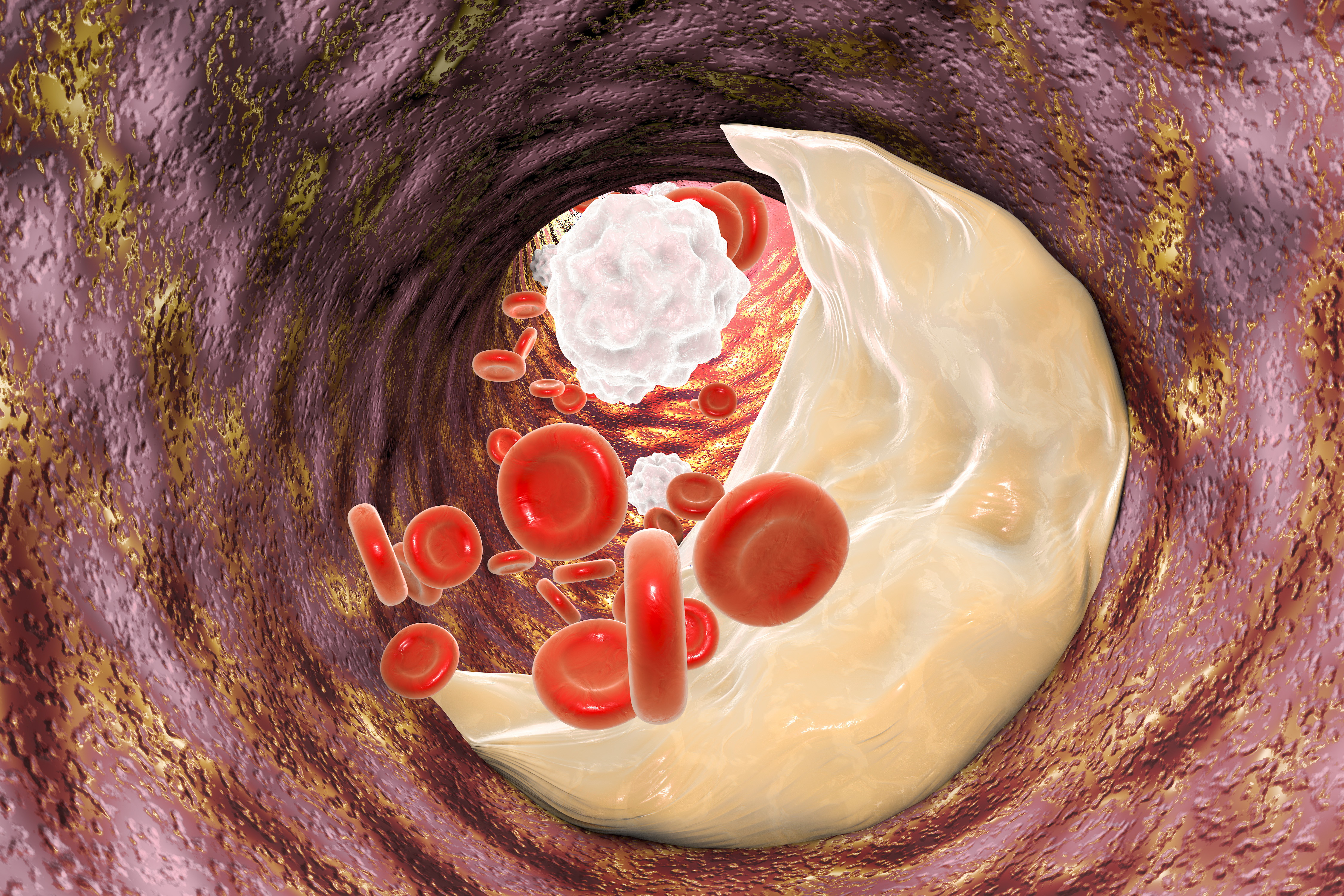According to a new study, Cangrelor could serve to bridge the gap of antiplatelet inhibition in patients undergoing primary percutaneous coronary intervention (P-PCI) for acute coronary syndrome, who were administered crushed ticagrelor. Additionally, no drug-drug interactions (DDI) were reported between the two P2Y12 inhibitors, based on the findings published in Circulation.
This pharmacodynamic study randomized 50 P-PCI patients to receive a loading dose of ticagrelor (180 mg) in the form of crushed tablets in addition to either cangrelor or matching placebo. The cangrelor (or the matching placebo) was given as a bolus dose at the time of ticagrelor administration followed by a 2-hour infusion. P2Y12 reaction units (PRU) and platelet reactivity index (PRI) were measured at 8 time points. The study results showcased that cangrelor was associated with decreased PRU throughout the infusion period, including at 30 minutes [63 (32-93) vs. 214 (183-245); mean difference: 152; 95% CI: 108-195; p<0·001]. Additionally, there was no difference in the PRI between the cangrelor and the placebo groups suggesting no DDI between cangrelor and ticagrelor when they were administered simultaneously.
 [perfectpullquote align=”full” bordertop=”false” cite=”” link=”” color=”” class=”” size=””]“CANTIC is the first randomized study to assess the comparative PD effects of cangrelor versus placebo in patients concomitantly treated with a crushed formulation of ticagrelor in STEMI patients undergoing P-PCI. Overall, these observations support the use of cangrelor in PPCI patients as a strategy to achieve prompt and potent P2Y12 inhibitory effects and bridge the gap in platelet inhibition associated with the use of ticagrelor, which can be administered concomitantly with cangrelor without evidence of DDI.”- Francesco Franchi et al.[/perfectpullquote]
[perfectpullquote align=”full” bordertop=”false” cite=”” link=”” color=”” class=”” size=””]“CANTIC is the first randomized study to assess the comparative PD effects of cangrelor versus placebo in patients concomitantly treated with a crushed formulation of ticagrelor in STEMI patients undergoing P-PCI. Overall, these observations support the use of cangrelor in PPCI patients as a strategy to achieve prompt and potent P2Y12 inhibitory effects and bridge the gap in platelet inhibition associated with the use of ticagrelor, which can be administered concomitantly with cangrelor without evidence of DDI.”- Francesco Franchi et al.[/perfectpullquote]
According to the authors, “CANTIC is the first randomized study to assess the comparative PD effects of cangrelor versus placebo in patients concomitantly treated with a crushed formulation of ticagrelor in STEMI patients undergoing P-PCI.” The guidelines recommend administering dual antiplatelet therapy with aspirin and a P2Y12 inhibitor to patients undergoing P-PCI to avoid thrombotic complications. Unfortunately, the delayed onset of antiplatelet activity of P2Y12 inhibitors is a disadvantage of this strategy. Previous studies showed that crushed ticagrelor tablets could accelerate the absorption and the onset of action of the drug. However, the gastrointestinal absorption of ticagrelor could be delayed due to concomitant morphine administration and the decreased motility of the gastrointestinal tract, rendering the need for a parenteral P2Y12 inhibitor in this population of patients. Two parenteral antiplatelet medications were available: cangrelor and Glycoprotein IIb-IIIa inhibitors (GPI). Previous evidence showed that GPI may be associated with increased bleeding risk and mortality.
While cangrelor was not compared with crushed ticagrelor, the current study suggested that cangrelor could serve as a bridge until the full antiplatelet effect of ticagrelor was achieved, without significant DDI. “Overall, these observations support the use of cangrelor in PPCI patients as a strategy to achieve prompt and potent P2Y12 inhibitory effects and bridge the gap in platelet inhibition associated with the use of ticagrelor, which can be administered concomitantly with cangrelor without evidence of DDI,” the authors concluded.





